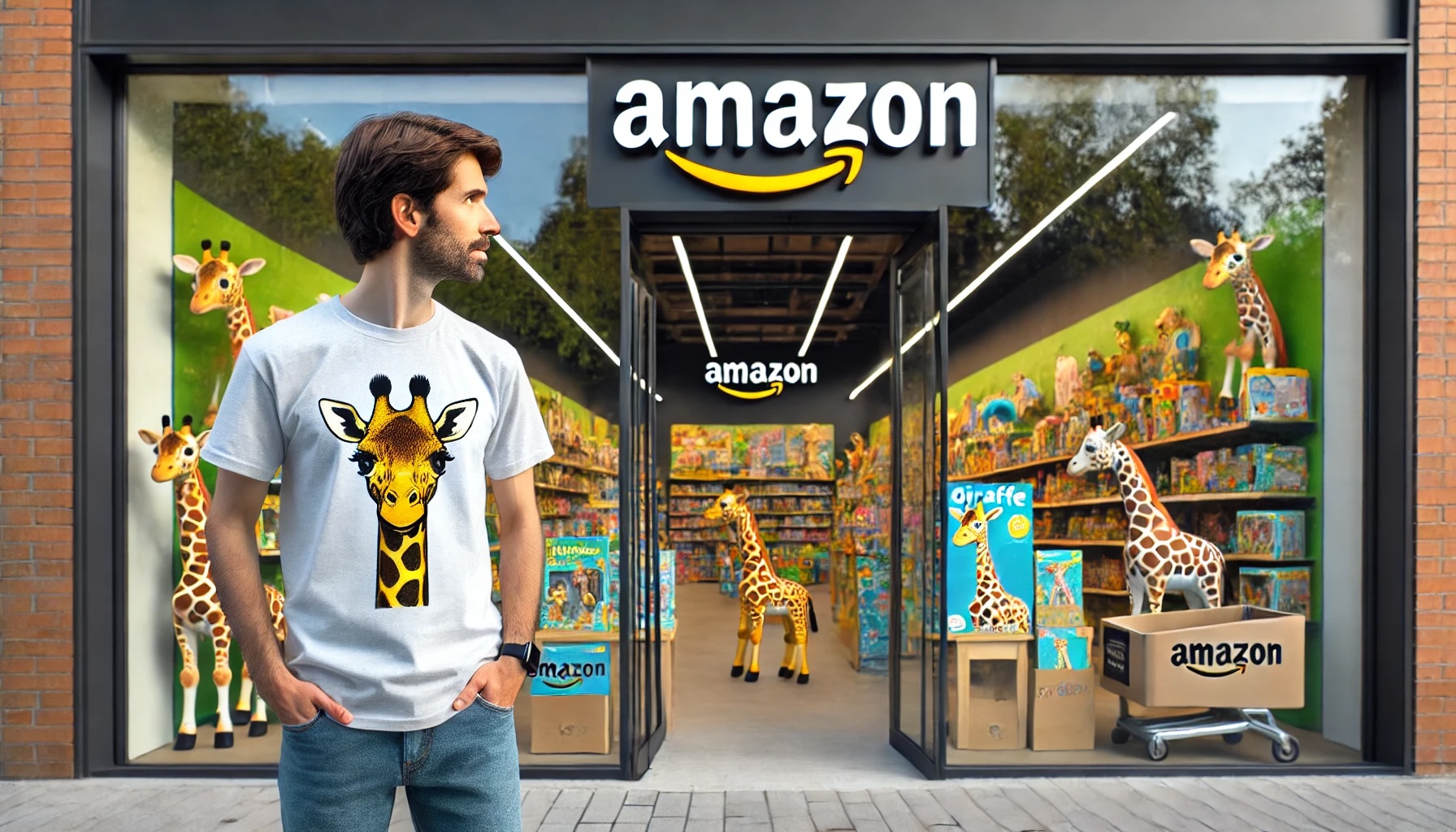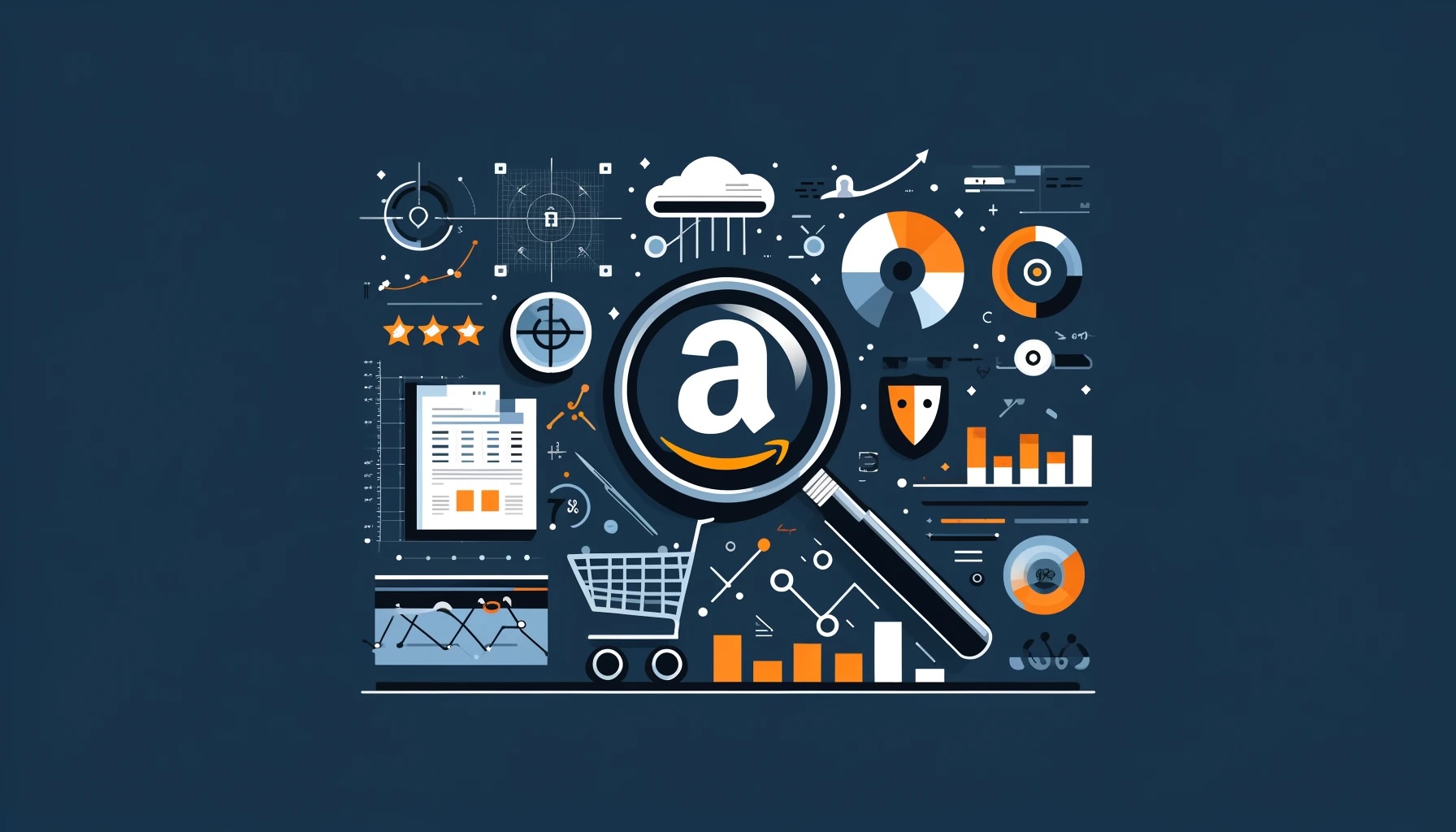Don’t Want to Sell on Amazon? Here’s Why Your Brand Might Be There Already
Not selling on Amazon might NOT be an option. Top reasons why your products could be sold by others on the platform, and what to do about it.

As a brand owner, you may be surprised to find your products listed on Amazon by sellers you don’t recognize. One way to think about Amazon’s marketplace is to picture it as the world’s largest digital flea market. They are not a retailer, so the traditional guardrails do not necessarily apply.
In this post, we take a close look at reasons why your products may be sold by others on Amazon, the potential impact on your brand, and steps you can take to address the issue.
Here’s how it might play out.
How Brand Piracy Impacts Your Brand
Not all brand piracy is of the black hat variety. As detailed later in this post, though certainly not harmless, some eventual sellers might not even realize the brand owners haven’t authorized the sales. Still, there’s a significant component of outright deception going on.
What is true is that the effects of brand piracy can snowball.
According to research from Michigan State University, nearly seven in 10 people were deceived into buying counterfeit products online at least once in the past year.
Accounting for up to 2.5% of world trade, counterfeiting is one of the most pervasive and troublesome forms of brand abuse for large brands. It’s not just a temporary loss of revenue. It ultimately results in damages to the brand’s reputation and overall value.
Social Media Helps Fuel the Fire
For brands with a social presence – particularly larger brands – the proliferation of social media and online marketplaces has intensified the challenges posed by brand piracy. These platforms provide counterfeiters with unprecedented access to global audiences, making it easier to sell fake products, spread misinformation, and impersonate legitimate brands.
The rapid spread of content on social media can quickly amplify the damage caused by brand abuse, diluting brand messaging and eroding consumer trust.
Brands of all sizes face significant difficulties in monitoring and addressing these issues across multiple platforms, struggling to maintain control over their online reputation and protect their intellectual property.
Monitoring the incendiary potential of hijacked social media has become a full time job. This has created a complex environment where managing brand integrity requires constant vigilance, sophisticated monitoring tools, and proactive strategies to educate consumers and combat unauthorized use of brand assets.
Ready to Start Growing Your Amazon Brand?
Canopy’s Partners Achieve an Average 84% Profit Increase!
Find out moreWhy Your Brand Might Already Be On Amazon
Finding your brand on Amazon (without your prior knowledge) can be a shock, and can happen for a number of reasons and through various channels including unauthorized resellers, legitimate distribution networks, and gray market sales.
Let’s begin by addressing three reasons why you might find your own brand already sold on Amazon’s busy marketplace.
1. Unauthorized Resellers
This is every entrepreneur’s nightmare and one of the primary reasons your products might appear on Amazon without your knowledge. Unauthorized resellers operate independently and often acquire products through various means including:
Retail arbitrage: Some sellers purchase products at retail stores, often during sales or clearance events, and then resell them on Amazon at a markup. This practice, known as retail arbitrage, can lead to your products being sold by multiple unknown parties.
Liquidation sales: Liquidators often list surplus products on Amazon, often at prices below your recommended retail price. Sometimes this involves massive companies reeling from retailer bankruptcy such as the recent case of Bed Bath & Beyond.
Counterfeit or knockoff products: In some cases, black hat sellers may offer counterfeit versions of your products, claiming them to be authentic. This not only impacts your sales but can also damage your brand’s reputation if customers receive inferior imitations of your own product.
2. Authorized Distribution Channels
Sometimes, it’s not out-and-out black hat sellers causing the problems. Your products may appear on Amazon through legitimate channels that you may not be fully aware of.
Wholesalers or distributors: If you sell your products to wholesalers or distributors, they may choose to list these items on Amazon as part of their own sales strategy. This may be within their rights, but it can lead to unexpected competition and pricing issues.
Retail partners: Do you sell your products through brick-and-mortar retailers? If so, those that carry your products might choose to expand their operations to include online marketplaces like Amazon.
Affiliate or dropshipping programs: If you have an affiliate program or allow dropshipping, some participants may use Amazon as part of their sales channel. That can easily lead to multiple listings of your products.
3. Gray Market Sales
Gray market sales occur when products intended for one market are sold in another, often at different prices.
Regional imports: Products manufactured for sale in other countries may be imported and resold on Amazon in your primary market. This can lead to pricing discrepancies and potential warranty issues.
Discontinued or older versions: Amazon sellers can sometimes acquire older versions of your products or items you’ve discontinued and continue to sell them on Amazon’s marketplace, potentially confusing customers and competing with your current offerings.

First Steps to Address the Issue
To regain control over your product listings on Amazon, consider implementing the following strategies:
Implement stricter distribution agreements: Revise your contracts with distributors and retailers to explicitly prohibit unauthorized Amazon sales or to control how your products are sold online.
Use unique product identifiers: Implement serialization or other tracking methods to identify the source of products being sold on Amazon.
Monitor and report unauthorized sellers: Regularly search for your products on Amazon and report any listings that violate your policies or Amazon’s rules.
Consider becoming an official Amazon seller: By selling directly on Amazon, you can have more control over your product listings and pricing.
That leads us to . . .
Selling On Amazon as a Defensive Strategy
Even if you haven’t discovered evidence of your brand on Amazon, in many cases it’s just a matter of time before the constantly increasing competition on Amazon brings a pirate to your doorstep.
The best time to defend your brand on Amazon is BEFORE someone hijacks your product. That’s why it may be worth establishing an official presence on the platform RIGHT NOW!.
This approach allows you to manage your brand’s representation directly, ensure consistent pricing, and provide the level of customer service that aligns with your brand values.
Enrolling in Amazon’s Brand Registry is a great first move. The robust program gives you more control over your product listings and to combat potential intellectual property infringements.
Having a controlled presence on Amazon can offer several advantages:
Direct management of product listings and pricing: As an official seller, you can ensure that your product information is accurate and pricing aligns with your strategy.
Ability to provide authentic customer service: By managing your own listings, you can respond directly to customer inquiries and concerns, maintaining your brand’s reputation for quality service.
Protection against unauthorized sellers: Amazon often gives preference to brand owners in disputes with unauthorized sellers, helping you maintain control over your listings.
Amazon’s Transparency Program creates brand guardrails: Amazon’s Transparency program protects your brand and customers using secure, unique codes that identify individual units. This stops counterfeits from reaching customers and helps ensure that every unit shipped is authentic.
And, last but not least . . .
Access to Amazon’s large customer base: Why not take advantage of Amazon’s massive user base to reach new customers and increase sales? There’s a good chance you’ll make enough money that the headaches of defending your brand turf might recede into the background.
Ready to Start Growing Your Amazon Brand?
Canopy’s Partners Achieve an Average 84% Profit Increase!
Find out moreAbout Canopy Management
Finding your products sold by others on Amazon can be a disconcerting, but unfortunately common challenge in today’s ecommerce landscape. By understanding the various ways your products can end up on the platform – and perhaps building your own Amazon store – you might surprise yourself with a previously unexplored revenue stream.
Addressing unauthorized sales on Amazon is an ongoing process. Stay vigilant by regularly monitoring the platform for unauthorized listings and be prepared to take action when necessary. By maintaining control over your brand’s presence on Amazon, you can protect your reputation, maintain pricing integrity, and potentially tap into a valuable sales channel.
If you’d like to take a shortcut that increasing numbers of Amazon’s top sellers have used to get to where they are now, reach out to the team at Canopy Management.
Turns out that when you combine the massive experience of Canopy’s Amazon Experts with smart tools and tech, you get industry-leading results like this:
- 84% Average Year-Over-Year Profit Growth for Our Partners
- 2.7 Billion in Revenue Managed
- 99.1% Partner Retention Rate
Canopy Management is a full-service marketing agency for Amazon and Walmart sellers. Our team consists of former Amazonians, multi-million dollar sellers, and award-winning experts.
When you consider the many ways that Canopy Management can help you grow your business, you’ll see why selling on Amazon is much easier “under the Canopy.”
- Strategic Growth Planning
- Listing Copywriting Optimization
- Listing Photography
- Product Videography
- Advertising Management
- Customer Service
- Demand Side Platform (Amazon DSP)
- Amazon Posts
- Full Service Management
- Amazon Review Aggregation


